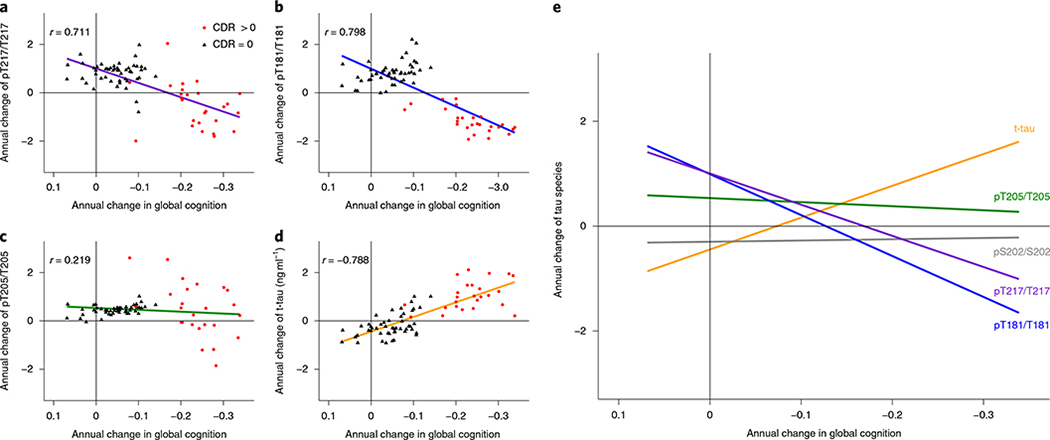Fig. 5 |. In DIAD, elevated levels of tau phosphorylation decline in some sites with the onset of dementia, in contrast with a continued rise in t-tau.
a–d, Individual estimated annualized rates of change of pT217/T217 (a), pT181/T181 (b), pT205/T205 (c) and t-tau (d), standardized for all mutation carriers, correlated with the annualized change in global cognitive function. The lines represent simple linear regression and the shaded areas represent 95% CIs. Each point is an individual-level correlation between measures, with Pearson’s r shown for all data. The linear regression was fit to those with no dementia (CDR = 0; black triangles; n = 49) and those with dementia (CDR > 0; red circles; n = 27). Declines in pT217/T217 (r = 0.711; P < 0.0001), pT181/T181 (r = 0.798; P < 0.0001) and pT205/T205 ( r = 0.219; P = 0.06) were associated with cognitive decline after symptom onset (red). For t-tau, there was an inverse correlation with cognition (r = −0.788; P < 0.0001). e, A linear fit for all mutation carriers demonstrates that there are distinct associations between declining cognition and changes in the different p-tau isoforms and t-tau: with decreases in pT217/T217 and pT181/T181, there is an increase in t-tau associated with cognitive decline, but no associations with pT205/T205 or pS202/S202. This suggests that soluble tau species are not equivalent in AD (pS202/S202 is shown here to demonstrate the lack of association with cognition (r = −0.09; P = 0.39). Statistical significance for all of the correlations was based on two-sided t-test.

